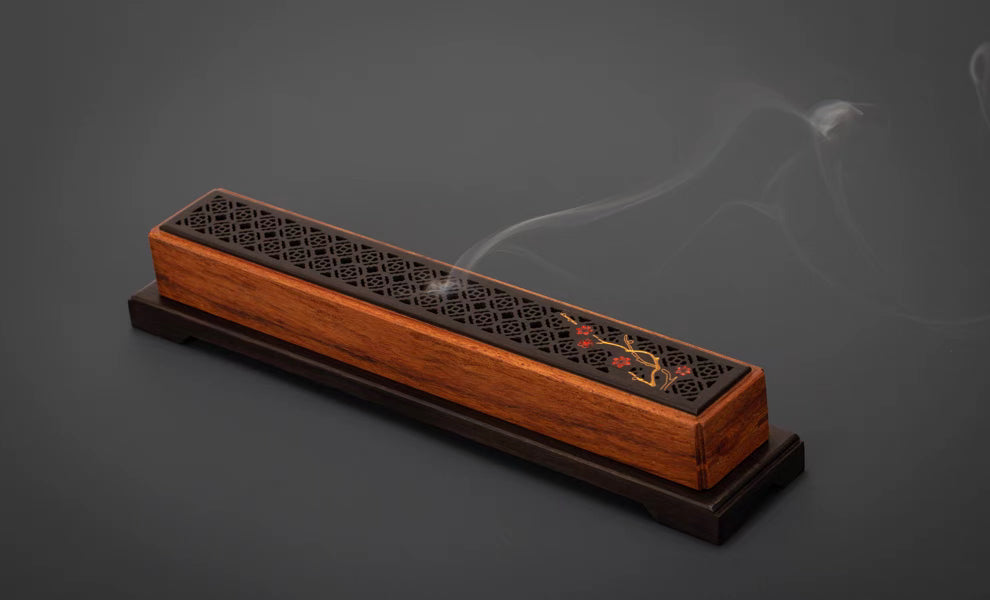
Exploring the Aromatic Worlds: The Differences Between Chinese and Japanese Incense
Incense has been an integral part of cultural, religious, and daily life practices in many Asian cultures for centuries. Among the most notable traditions are those from China and Japan. Although both countries hold incense in high regard, the ways in which incense is crafted, used, and experienced vary significantly. Join me as we delve into the aromatic worlds of Chinese and Japanese incense to discover the unique characteristics that set them apart.
Historical Roots and Cultural Influences
The history of incense in both China and Japan is rich and complex, with each offering a distinct approach influenced by cultural and historical contexts.
Chinese Incense
The use of incense in China dates back over 2,000 years, with its origins tied to religious and spiritual rituals. Influenced by Buddhism, Taoism, and traditional Chinese medicine, incense has been used for purification, meditation, and healing. The ingredients often reflect this holistic approach, incorporating a variety of herbs, woods, and resins designed to harmonize the body and mind.
Japanese Incense
Japanese incense, known as "kō," is closely tied to Zen Buddhism and the ancient art of Kōdō, the "way of incense." Introduced from China around the 6th century, it evolved into a highly refined practice, emphasizing mindfulness and aesthetic appreciation. The Japanese approach often focuses on the subtlety and purity of the fragrance, with an emphasis on the emotional and sensory experiences it evokes.
Craftsmanship and Ingredients
The crafting of incense in both cultures showcases their unique aesthetic and philosophical values, resulting in distinctive differences in ingredients and formulation.
Chinese Incense
Chinese incense is often characterized by its use of a wide array of natural ingredients, such as sandalwood, agarwood, herbs, and traditional Chinese medicine components. These ingredients are typically blended to create sticks, coils, or powders. The blends are designed to create complex and multi-layered scents, sometimes including additional ingredients like ginseng or cloves for their perceived health benefits.
Japanese Incense
Japanese incense makers prioritize the highest quality and purity of materials. Common ingredients include sandalwood, agarwood, and specific types of flowers or spices. The Japanese style often involves creating incense sticks without a bamboo core, allowing for a cleaner burn and a more subtle aroma. The emphasis is on minimalism and the balance of fragrances, often using fewer ingredients to allow each scent to stand out distinctly.
Usage and Cultural Significance
The cultural significance and use of incense vary in China and Japan, reflecting their respective philosophies and societal values.
In China
In China, incense usage is deeply ingrained in religious ceremonies, ancestor worship, and traditional festivals. Incense is burned in temples to create a sacred atmosphere and believed to carry prayers to the heavens. It also plays a role in feng shui practices, purifying spaces and enhancing energy flow.
In Japan
In Japan, the appreciation of incense is considered an art form. The practice of Kōdō involves the careful selection and burning of incense, emphasizing mindfulness and the deep contemplation of each scent. Incense ceremonies can be highly structured, akin to the tea ceremony, and are often performed in quiet meditation, focusing on the experience and emotional responses to the aroma.
Scent Profiles
The fragrance profiles of Chinese and Japanese incense offer another key difference between the two traditions.
Chinese Incense
Chinese incense often features bold and complex aroma profiles, blending multiple ingredients to create rich, layered scents. They are typically stronger and more prominent, designed to make an immediate impact.
Japanese Incense
In contrast, Japanese incense tends to be subtle and understated, with a focus on clarity and simplicity. The fragrances are designed to be appreciated over time, gently unfolding to reveal nuanced and delicate notes.
Conclusion
Both Chinese and Japanese incense traditions offer unique and profound ways of engaging with the senses. Each reflects a deep cultural heritage and philosophical approach, whether it's the rich, multifaceted experience of Chinese incense or the refined, meditative allure of Japanese kō.
For incense enthusiasts, exploring both traditions can be a rewarding journey, offering insight into the diverse ways societies can connect with the spiritual and sensory world through fragrance. Enjoy the exploration, and may it illuminate the art of balance and beauty in the air around you.
